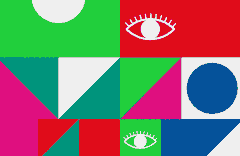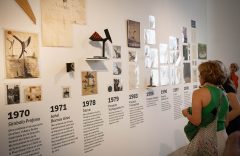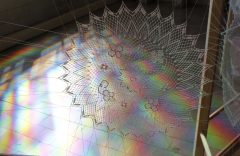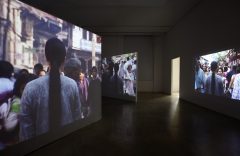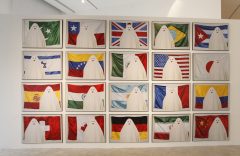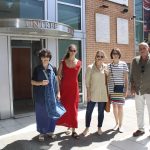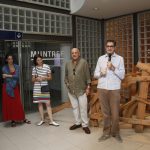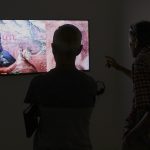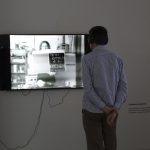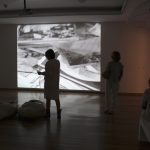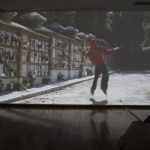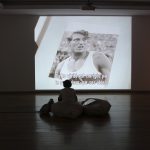
The MUNTREF Museum of Visual Arts presents this collection of videos from the French Regional Contemporary Art Fund (FRAC), with works by 18 international artists that reflect on the question of genre, territory and transit.
Socially responsible art for all is the line of work of the National University of Tres de Febrero Museum (MUNTREF); with the inauguration on March 7 of the exhibition Contellations, a selection of videos of the French FRAC (Regional Contemporary Art Funds) that explore current themes such as gender and migrations, at the Museum of Visual Arts of Caseros it adds a new chapter to its tour.
The exhibition, which has already been presented in Ushuaia and Puebla (Mexico) as part of the BIENALSUR 2019 program, made in conjunction with the French Institute and the French Embassy in Argentina, includes productions by the American Martha Rosler, Estefanía Peñafiel from Ecuador, the Lebanese Ymane Fakhir, the Canadian Kapwani Kiwanga, the German Harun Farocki and the French Annabelle Amoros and Jean-Christophe Norman, among other renowned artists.
The opening ceremony was attended by the rector of the UNTREF and general director of its Museum, Aníbal Jozami, together with the director of the Department of Art and Culture of the University, artistic director of the MUNTREF and also curator of the exhibition, Diana Wechsler. Accompanying them were the director of the French Institute in Argentina, Yann Lorvo, the also curator of Constellations, Benedetta Casini, the Italian artist Bruna Espósito (who will soon present her work at the MUNTREF Centro de Arte y Naturaleza), her Argentinean peer Carlota Beltrame (who will exhibit at the Contemporary Art Center MUNTREF) and the Brazilian artist José Bechara.
“MUNTREF doesn’t only try to take very high level cultural projects to areas that lacked them , but it also seeks to fundamentally internationalize Argentinean culture; this is the effort we are making with this exhibition,” stated the rector at the presentation, which had a large audience, and was full of students.
For her part, Wechsler said that the work of selecting the videos was very hard and that the themes and aesthetics contained invite to a critical reflection on the present time. “We worked on the hypothesis of thinking with images, and this curatorial essay is an exercise to make each space and activate in each work the possibility of thinking about the current moment we are living,” she said.
Yann Lorvo said he was moved to return to the Museum, which he defined as “a laboratory”, and highlighted the great curatorial work behind the exhibition. “Curation is a commitment, a lot of study and also making decisions, and we should never forget that when a cultural proposal comes from a university, it has a special added value,” he emphasized.
One of the axes highlighted in Constellations is feminism, with works such as Semiotics of the Kitchen, by Martha Rosler, and Sugar Loaf, by Ymane Fakhir, where questions such as: what does it mean to be a woman, and what are the practices and images that are socially associated with it, resonate.
Territory is another of its conceptual knots,: The Silver and the Cross, by Harun Farocki, which reviews the colonial history of America and the prolongation of those processes in the current capitalism, and Being and Lasting, as well, by the Spanish collective DEMOCRACIA, in which one can see a group of young people practicing parkour in the civil cemetery of Madrid where figures of socialism and republicanism rest, juxtaposing the present with the revolutionary utopias of the past, stand out.
Migrations also make up another of the central dimensions of the show, with compositions such as On the Road, by Annabelle Aromos, Vumbi, by Kapwani Kiwanga, And the Road Goes, by the Algerian Zineb Zedira and Mapping Journey #4, by the Moroccan Bouchra Khalili.
The FRACs were created in 1982 by the French socialist government and their main purpose is to acquire recent contemporary art works, exhibit them in the most varied places in the French regions and develop forms of public awareness of current artistic creation. Today, the collections of the 23 FRAC bring together more than 35,000 works by 6,000 French and foreign artists, ensuring a mission of support for young creators and becoming, thanks to the number of works exhibited each year, the most widespread public collection in France.
News
